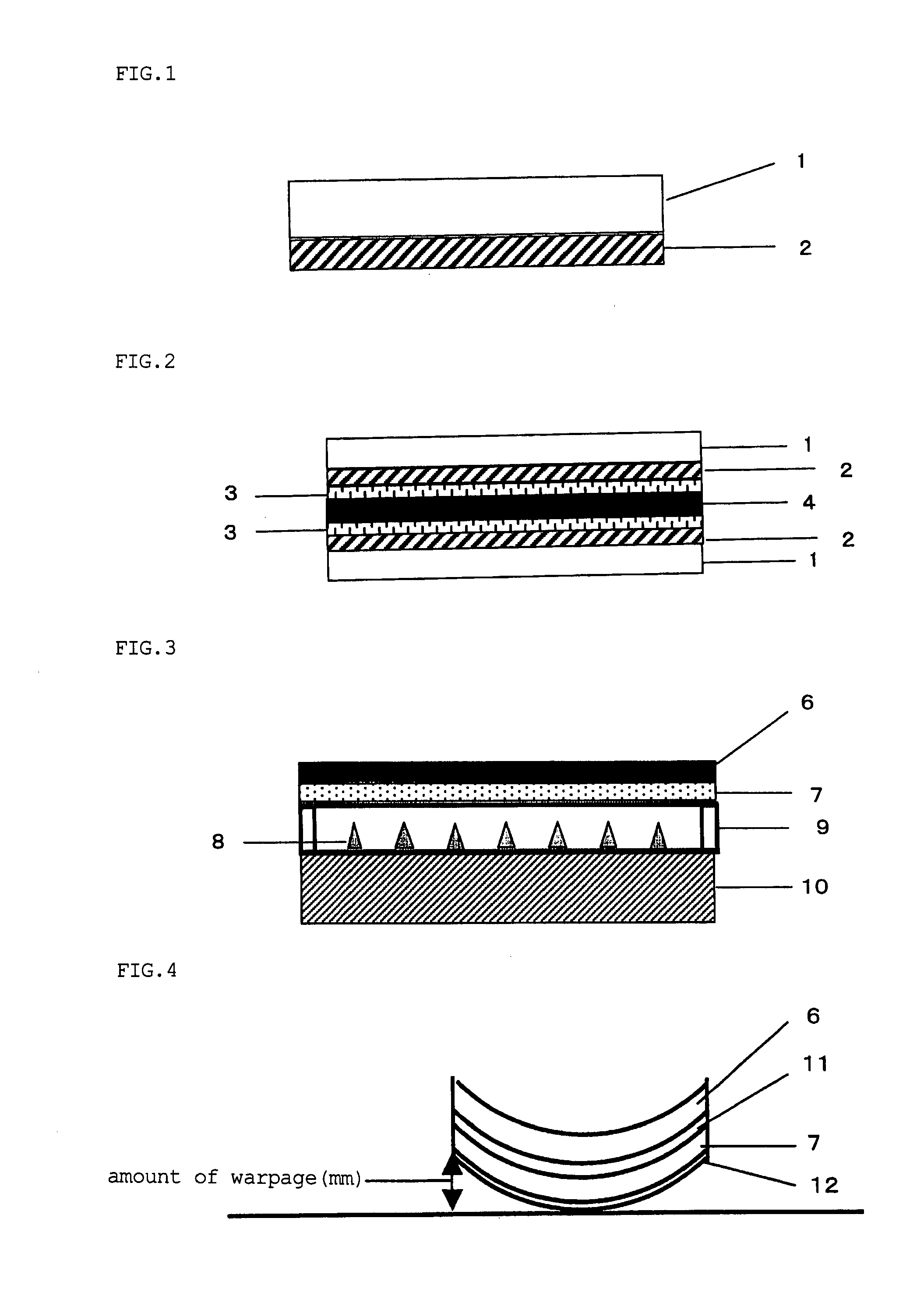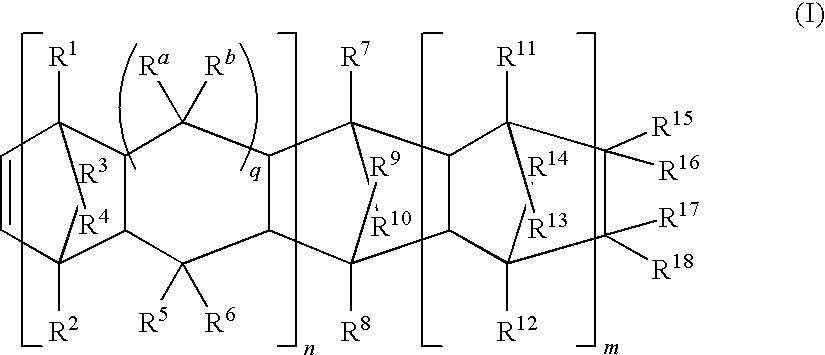Polarizing plate protective film, polarizing plate and resistive touch panel
- Summary
- Abstract
- Description
- Claims
- Application Information
AI Technical Summary
Benefits of technology
Problems solved by technology
Method used
Image
Examples
example 1
Protective Film Preparation
[0089]Using a cyclic olefin-based resin (a copolymer of norbornene and ethylene, trade name “TOPAS6015”, produced by Topas Advanced Polymers, Inc., number average molecular weight: 45,800, glass transition point: 160° C.), the optical isotropic films having a thickness of 200 μm were obtained according to the T-die molding method under the following conditions (resin temperature: 270° C., draw roll temperature: 140° C.).
[0090]The resulting film was stretched in the width direction to two times its original size at 170° C. using a tenter clip-type transverse stretching machine, to thereby obtain a retardation film having a thickness of 100 μm and a retardation of 138 nm.
[0091]Subsequently, corona discharge treatment was performed on both sides of each of the resulting optical isotropic film and the retardation film under air at a treatment strength of 100 W / m2·min., giving the films a wetting tension of 500 μN / cm (23° C.).
[0092]Subsequently, a 1 wt % isopro...
production example 1
Polarizer Preparation
[0094]A polyvinyl alcohol film having a thickness of 75 μm (trade name “Kuraray vinylon film VF-9X75R”, produced by Kuraray Co., Ltd.) was immersed for 5 minutes in an aqueous solution comprising 5,000 parts by weight of water, 35 parts by weight of iodine, and 525 parts by weight of potassium iodide, to adsorb iodine. Subsequently, the film was uniaxially stretched to about 4.4 times its original size in the longitudinal direction in a 4 wt % boric acid aqueous solution at 45° C. The film was then dried under tension to thereby obtain a polarizer (polarizing film) having a thickness of 17 μm.
example 2
Polarizing Plate Preparation
[0095]A 1.5 wt % aqueous solution of polyvinyl alcohol having an average polymerization degree of 1,800 and a saponification degree of 99% was used as an adhesive. The adhesive was applied to both sides of the polarizing film obtained in Production Example 1 to a thickness of 1 μm (when dried). While the adhesive was in an undried state, the polarizing plate protective films (1-1) obtained in Example 1 were laminated on both sides of the polarizing film through the silane coupling agent coating surfaces. The resulting structure was then secured between a rubber roller and a metal roller (the rubber roller having a diameter of 20.0 mm, the metal roller having a diameter of 350 mm, and the line pressure being 10 kg / cm), and allowed to stand in an oven at 40° C. for 24 hours, followed by drying.
[0096]Further, the polarizing plate protective film (1-1) obtained in Example 1 was applied to one side of the polarizing film obtained in Production Example 1 throug...
PUM
| Property | Measurement | Unit |
|---|---|---|
| Phase | aaaaa | aaaaa |
Abstract
Description
Claims
Application Information
 Login to View More
Login to View More - R&D
- Intellectual Property
- Life Sciences
- Materials
- Tech Scout
- Unparalleled Data Quality
- Higher Quality Content
- 60% Fewer Hallucinations
Browse by: Latest US Patents, China's latest patents, Technical Efficacy Thesaurus, Application Domain, Technology Topic, Popular Technical Reports.
© 2025 PatSnap. All rights reserved.Legal|Privacy policy|Modern Slavery Act Transparency Statement|Sitemap|About US| Contact US: help@patsnap.com



